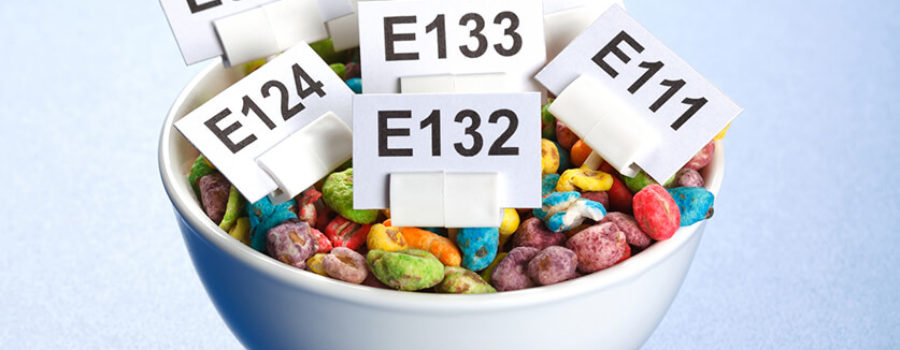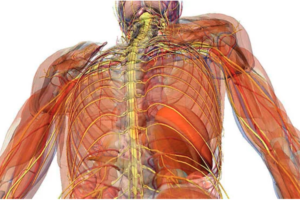Top 12 Food Additives To Avoid
The more highly processed foods you eat, the more salt, fat, sugar and additives you’ll eat too. So the easiest way to avoid them is to eat mainly fresh and only lightly processed foods, here is a list of the “Top 12 Food Additives to Avoid”.
Artificial Sweeteners
Aspartame, (E951) more popularly known as Nutrasweet and Equal, is found in foods labeled “diet” or “sugar-free”. Aspartame is believed to be carcinogenic and accounts for more reports of adverse reactions than all other foods and food additives combined. Aspartame is not your friend. Aspartame is a neurotoxin and carcinogen. Known to erode intelligence and affect short-term memory, the components of this toxic sweetener may lead to a wide variety of ailments including brain tumor, diseases like lymphoma, diabetes, multiple sclerosis, Parkinson’s, Alzheimer’s, fibromyalgia, and chronic fatigue, emotional disorders like depression and anxiety attacks, dizziness, headaches, nausea, mental confusion, migraines and seizures. Acesulfame-K, a relatively new artificial sweetener found in baking goods, gum and gelatin, has not been thoroughly tested and has been linked to kidney tumors. Read more about the dangers of Aspartame here.
Found in diet or sugar-free sodas, diet coke, coke zero, sugar-free jellies (and other gelatins), desserts, sugar-free gum, drink mixes, baking goods, table top sweeteners, cereal, breath mints, pudding, kool-aid, ice tea, sugar-free cordials, chewable vitamins, toothpaste.
High Fructose Corn Syrup
High fructose corn syrup (HFCS) is a highly-refined artificial sweetener which has become the number one source of calories in America and we have many imported goods from the USA and other parts of the world still using HFCS.
It is found in almost all processed foods. HFCS packs on the pounds faster than any other ingredient, increases your LDL (“bad”) cholesterol levels, and contributes to the development of diabetes and tissue damage, among other harmful effects.
Found in most processed foods, bread, candy, flavoured yogurts, salad dressings, canned vegetables, cereals.
Monosodium Glutamate (MSG / E621)
MSG is an amino acid used as a flavour enhancer in soups, salad dressings, chips, frozen entrees, and many restaurant foods.
MSG is known as an excitotoxin, a substance which overexcites cells to the point of damage or death. Studies show that regular consumptiopn of MSG may result in adverse side effects which include depression, disorientation, eye damage, fatigue, headaches, and obesity. MSG affects the neurological pathways of the brain and disengages the “I’m full” function which explains the effects of weight gain.
Found in Chinese food (Chinese Restaurant Syndrome ) many snacks, chips, cookies, seasonings, most Campbell Soup products, instant soups, frozen dinners and lunch meats.
Trans Fat
Trans fat is used to enhance and extend the shelf life of food products and is among the most dangerous substances that you can consume. Found in deep-fried fast foods and certain processed foods made with margarine or partially hydrogenated vegetable oils, trans fats are formed by a process called hydrogenation. Numerous studies show that trans-fat increase LDL cholesterol levels while decreasing HDL (“good”) cholesterol, increases the risk of heart attacks, heart disease, and strokes, and contributes to increased inflammation, diabetes, and other health problems. Oils and fat are now forbidden on the Danish market if they contain trans fatty acids exceeding 2 per cent, a move that effectively bans partially hydrogenated oils.
Found in margarine, chips and crackers, baked goods, fast foods.
Common Food Dyes
Studies show that artificial colourings which are found in soda, fruit juices, and salad dressings, may contribute to behavioural problems in children and lead to a significant reduction in IQ. Animal studies have linked some food colourings to cancer. Watch out for these ones:
Blue #1 and Blue #2 (E133)
Banned in Norway, Finland, and France. May cause chromosomal damage.
Found in candy, cereal, soft drinks, sports drinks and pet foods.
Red dye # 3 (also Red #40 – a more current dye) (E124)
Banned in 1990 after 8 years of debate from use in many foods and cosmetics. This dye continues to be on the market until supplies run out! Has been proven to cause thyroid cancer and chromosomal damage in laboratory animals, may also interfere with brain-nerve transmission.
Cochineal 120
Found in fruit cocktail, maraschino cherries, cherry pie mix, ice cream, candy, bakery products and more!
Yellow #6 (E110) and Yellow Tartrazine (E102)
Banned in Norway and Sweden. Increases the number of kidney and adrenal gland tumors in laboratory animals, may cause chromosomal damage.
Found in American cheese, macaroni and cheese, candy and carbonated beverages, lemonade and more!
Sodium Sulfite (E221)
Preservative used in wine-making and other processed foods. According to the FDA, approximately one in 100 people is sensitive to sulfites in food. The majority of these individuals are asthmatic, suggesting a link between asthma and sulfites. Individuals who are sulfite sensitive may experience headaches, breathing problems, and rashes. In severe cases, sulfites can actually cause death by closing down the airway altogether, leading to cardiac arrest.
Found in wine and dried fruit.
Preservatives – benzoates 210, 211, 212, 213; nitrates 249, 250, 251, 252; sulphites 220, 221, 222, 223, 224, 225 and 228
Sodium Nitrate/Sodium Nitrite
Sodium nitrate (or sodium nitrite) is used as a preservative, colouring, and flavouring in bacon, ham, hot dogs, lunch meats, corned beef, smoked fish and other processed meats. This ingredient, which sounds harmless, is actually highly carcinogenic once it enters the human digestive system. There, it forms a variety of nitrosamine compounds that enter the bloodstream and wreak havoc with a number of internal organs: the liver and pancreas in particular. Sodium nitrite is widely regarded as a toxic ingredient, and the USDA actually tried to ban this additive in the 1970’s but was vetoed by food manufacturers who complained they had no alternative for preserving packaged meat products. Why does the industry still use it? Simple: this chemical just happens to turn meats bright red. It’s actually a color fixer, and it makes old, dead meats appear fresh and vibrant.
Found in hotdogs, bacon, ham, lunch meat, cured meats, corned beef, smoked fish or any other type of processed meat.
BHA And BHT (E320)
Butylated hydroxyanisole (BHA) and butylated hydroxytoluene (BHT) are preservatives found in cereals, chewing gum, potato chips, and vegetable oils. This common preservative keeps foods from changing colour, changing the flavour or becoming rancid. Affects the neurological system of the brain, alters behaviour and has a potential to cause cancer. BHA and BHT are oxidants which form cancer-causing reactive compounds in your body.
Found in potato chips, gum, cereal, frozen sausages, enriched rice, lard, shortening, candy, sweets and some jelly products.
Sulfur Dioxide/Sulphur Dioxide (E220)
Sulphur additives are toxic and in the United States of America, the Federal Drugs Administration have prohibited their use on raw fruit and vegetables.
There is a Proposal is to consider benzoate and sulphite permissions in all foods in response to findings of FSANZ’s 21st Australian Total Diet Survey (June 2016), which found some population sub-groups in Australia consume amounts in excess of the Acceptable Daily Intake levels. The papers explained if you are concerned about your child’s exposure to sulphites then you should limit their intake of foods that are major contributors of sulphites, particularly cordials, non-organic dried fruit and sausages.
Under the Food Standards Code added sulphites must be declared in the ingredients list on the label of a packaged food when present in foods in concentrations of 10 mg/kg or more.
This allows consumers who may be sensitive to sulphites to avoid them.
When a manufacturer meets this requirement by declaring sulphites in an ingredient list, the sulphites must be labelled by their prescribed class name (e.g. preservative), followed by the additive’s specific name (e.g. sulphur dioxide) or code number (e.g. 220 to 228).
If the food is unpackaged (e.g. dried apricots sold in bulk bins, sausages in a butchers shop), the presence of sulphites must be declared on or in connection with the display of the food, or the purchaser can request this information.
There were breaches detected during routine testing of butcher shops for the presence of sulphur dioxide by the Food Authority.
Sulphur dioxide is used as a preservative, especially in dried fruits, but also in grapes (both fresh and in winemaking).
Adverse reactions include bronchial problems particularly in those prone to asthma, hypotension (low blood pressure), flushing, tingling sensations or anaphylactic shock. It also destroys vitamins B1 and E. Not recommended for consumption by children. The International Labour Organization says to avoid E220 if you suffer from conjunctivitis, bronchitis, emphysema, bronchial asthma, or cardiovascular disease.
Found in beer, soft drinks, dried fruit, juices, cordials, wine, vinegar, and potato products.
Potassium Bromate
An additive used to increase volume in some white flour, bread, and rolls, potassium bromate is known to cause cancer in animals. Even small amounts in bread can create problems for humans.
Found in bread.
Calcium Carbide
Calcium carbide is also used in some countries for artificially ripening fruit. When calcium carbide comes in contact with moisture, it produces acetylene gas, which is quite similar in its effects to the natural ripening agent, ethylene. While its use remains banned in most countries, there is no prohibition for using Calcium Carbide to artificially ripen fruit in Pakistan.
The chemical widely used for artificially ripening fruits is calcium carbide (CaC2) which contains arsenic and phosphorus, both of which can prove fatal for human beings. CaC2 is a known carcinogen – an agent having the ability to alter human cells into cancerous cells.
Fruits and vegetables coming from overseas when these are not in season to keep up the supply and demand. They are generally picked very raw fruit and sprayed during transportation with the amount of the chemical needed to ripen the fruit has to be increased. We recommend buying in season fruits and vegetables.
Ethylene is most used today for ripening fruit.
Apples and pears are examples of fruit that produce ethylene with ripening. Ethylene is responsible for the changes in texture, softening, colour, and other processes involved in ripening. (C2H4) Ethylene has been found not harmful or toxic to humans in the concentrations found in ripening rooms (100-150 ppm). The amount used is important.
Ethylene is a ripening hormone – a chemical substance produced by fruits with the specific biological action of accelerating the normal process of fruit maturation and dying. Ethylene can promote ripening in tomatoes, bananas, citrus, pineapples, dates, pears, apples, melons, mangoes, avocados and papayas.
Fruits such as cherries and blueberries do not produce much ethylene and it doesn’t influence their ripening. Ethylene is thought of as the ageing hormone in plants.
Ethylene is good but can accelerate ageing and eventual spoilage of many fruits and vegetables. Therefore it is advisable not to store ethylene-sensitive fruits and vegetables together with ethylene releasing fruits. Some of ethylene-sensitive vegetables are: broccoli, cabbage, cauliflower, lettuce.
Carrageenan
Carrageenan is injected into meat for moisture retention, added to soy milk, and you can even find it in some toothpastes.
Carrageenan is a food additive that has become ubiquitous in the last few decades. Questions have arisen regarding its safety for the human digestive tract. But is carrageenan inflammatory or just its detractors? And if it is inflammatory, what foods should we avoid?
There are three types of carrageenans – kappa, iota and lambda – and they are used in various combinations from product to product depending on the desired chemical properties. In addition, there are two classifications of carrageenan by the Australian Therapeutic Goods Administration (TGA): undegraded carrageenan (CGN) and degraded carrageenan (dCGN), or poligeenan, which has a slightly lower weight.
Dr Joanne K. Tobacman, Associate Professor of Clinical Medicine at the University of Illinois, published a comprehensive review of 45 publicly funded studies concluding that “the potential role of carrageenan in the development of gastrointestinal malignancy and inflammatory bowel disease requires careful reconsideration of the advisability of its continued use as a food additive.” The food industry swiftly responded by funding a study that criticised some of the previous studies’ methodologies and highlighted that many of them were on poligeenan, which is not used as a food additive.
In Australia, foods containing carrageenan will contain one of the following labels: ‘vegetable gum (407)’, ‘carrageenan gum’, or ‘vegetable gum (carrageenan)’. In the United States, food containing carrageenan will say ‘carrageenan’ on the label and in Europe it will say ‘E407’ or ‘E407a’. For those wanting to avoid carrageenan in the foods they eat, check out Cornucopia’s guide to avoiding organic foods with carrageenan: cornucopia.org/shopping-guide-to-avoiding-organic-foods-with-carrageenan/
Types of food additives
The different types of food additive and their uses include:
Here are the different types of food additives and their common uses:
- Anti-caking agents (400, 500 & 900 ranges) stop ingredients from sticking together and forming lumps.
- Antioxidants (300 range) slow or prevent the oxidative deterioration of foods.
- Artificial sweeteners (400 & 900 ranges) increase the sweetness in food without adding kilojoules. Intense sweeteners have code numbers in the 900 range, while bulk sweeteners are in the 400s.
- Bulking agents increase the volume of food without majorly changing its available energy.
- Colours (100 range) add or restore colour to foods.
- Emulsifiers (400 range) prevent oil and water from separating, as well as keep fats from clumping together.
- Firming agents and stabilisers (400 range) maintain the even dispersion of substances in foods.
- Flavour enhancers (600, 900 & 1000 ranges) improve the flavour and/or aroma of food. Most flavour enhancers have code numbers in the 600 range, while thaumatin and proteases are in the 900 and 1000 ranges respectively.
- Flavours add flavour to tasteless foods.
- Flour treatment (500, 900 & 1000 ranges) improves the quality of baking.
- Food acids (200 & 300 ranges) influence the function of other substances in foods, e.g. slow the growth of microorganisms.
- Foaming agents maintain the even dispersion of gas in aerated foods.
- Gelling agents change the texture of food via gel formation.
- Glazing agents (900 range) improve the appearance of food by imparting a coating to the surface, which can also protect it.
- Humectants (400 range) retain moisture in food.
- Mineral salts (300-500 range) enhance the texture and flavour of food.
- Preservatives (200 range) slow or prevent the deterioration and spoilage of food by microorganisms.
- Propellants (200 & 900 ranges) help propel food out of a container.
- Raising agents increase the volume of food by releasing gases.
- Thickeners and vegetable gums (400 & 1000 range) enhance the texture and consistency of food. Vegetable gums have code numbers in the 400 range, while modified starches are in the 1000s.
For most people, additives are not a problem in the short term. However, 50 of the 400 currently approved additives in Australia have been associated with adverse reactions in some people. Some food additives are more likely than others to cause reactions in sensitive people.
It is often the additives that are used to give a food a marketable quality, such as colour, that most commonly cause allergic reactions. Some of these hypersensitive reactions include:
- Digestive disorders – diarrhoea and colicky pains
- Nervous disorders – hyperactivity, insomnia and irritability
- Respiratory problems – asthma, rhinitis and sinusitis
- Skin problems – hives, itching, rashes and swelling.
It is important to realise that many of the symptoms experienced as a result of food sensitivities can be caused by other disorders. Medical diagnosis is important. If you try to diagnose yourself, you may restrict your diet unnecessarily and neglect an illness.
 “Top 12 Food Additives To Avoid” Author: Penelope Jayne Holistic Health and Wellness Coach, Global Recharge
“Top 12 Food Additives To Avoid” Author: Penelope Jayne Holistic Health and Wellness Coach, Global Recharge
https://www.foodmatters.com/article/top-10-food-additives-to-avoid
https://www.betterhealth.vic.gov.au/health/ConditionsAndTreatments/food-additives
https://www.cbhs.com.au/health-well-being-blog/blog-article/2015/03/12/food-additives-harmful-or-harmle
All content and media on Global Recharge is created and published online for informational purposes only. It is not intended to be a substitute for professional medical advice and should not be relied on as health or personal advice.










